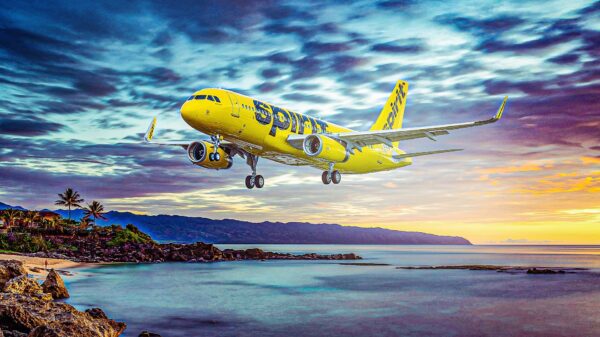Spirit Airlines has announced significant cost-cutting measures, including the elimination of approximately 150 salaried positions and the termination of all services to five airports. This decision is part of a broader strategy to address the airline’s financial struggles, projected to result in a loss exceeding $800 million in 2025. The airline’s financial difficulties have persisted for years, culminating in a bankruptcy filing in March 2025 and a subsequent Chapter 11 bankruptcy protection filing in August 2025.
As part of these latest changes, Spirit Airlines will cease operations at St. Louis Lambert International Airport, Phoenix Sky Harbor International Airport, Milwaukee Mitchell International Airport, Frederick Douglass Greater Rochester International Airport, and Bucaramanga Palonegro International Airport in Colombia. These service reductions will take effect in January 2026, with three of the airports closing on January 8, 2026, and the remaining two on January 13, 2026.
The decision to discontinue service at these locations reflects Spirit’s ongoing efforts to streamline its operations. Currently, the airline serves only six routes from Milwaukee, three routes each from St. Louis and Rochester, two from Phoenix, and one from Bucaramanga. None of these airports represent major operational hubs, indicating limited competition and underperformance in these routes.
Significant Reductions in Staff and Fleet Size
In a move that underscores the airline’s precarious situation, Spirit Airlines will also reduce its fleet by nearly 100 aircraft. This reduction will be achieved through the early retirement of older planes, storing new aircraft, and rejecting future leases. Spirit’s current fleet size stands at 132 aircraft, nearly half of what it was at the start of 2025.
Additionally, the company has previously announced the furloughing of 1,800 flight attendants, which constitutes roughly a third of its total flight attendant workforce. The airline also plans to furlough 365 pilots and downgrade the status of another 170 pilots, following an earlier announcement regarding the furlough of 270 pilots. Such drastic measures indicate a comprehensive strategy to “shrink to profitability,” a tactic that has had mixed results in the airline industry due to high overhead costs.
Challenges in the Competitive Landscape
Spirit Airlines’ ongoing financial woes can be partly attributed to its route network, which primarily connects major cities to popular vacation destinations such as Florida, the Caribbean, and Las Vegas. This model exposes the airline to intense competition from legacy carriers that often offer more extensive services and amenities. The airline’s focus on the Eastern United States adds another layer of vulnerability, as budget airlines tend to thrive by avoiding direct competition.
The broader budget airline market is also facing challenges. For instance, JetBlue Airways is projected to incur losses exceeding $100 million in 2025 despite its efforts to implement a turnaround plan. Frontier Airlines has seen improvements, but only after significant changes to its business strategy. Meanwhile, Southwest Airlines is adapting its model under the guidance of activist investors.
One unique challenge for Spirit Airlines is its brand image. The airline is primarily recognized for its low-cost, no-frills flights, which may not appeal to a growing segment of customers who favor premium airlines with lucrative frequent flyer programs and comprehensive premium cabin options. This perception could hinder Spirit’s ability to regain stability in a competitive market.
In conclusion, Spirit Airlines’ recent announcements reflect significant operational changes as the airline grapples with substantial financial losses and a challenging competitive environment. While the strategy of cutting jobs, routes, and fleet size aims to restore profitability, the effectiveness of this approach remains to be seen as the airline navigates its path forward.



































































